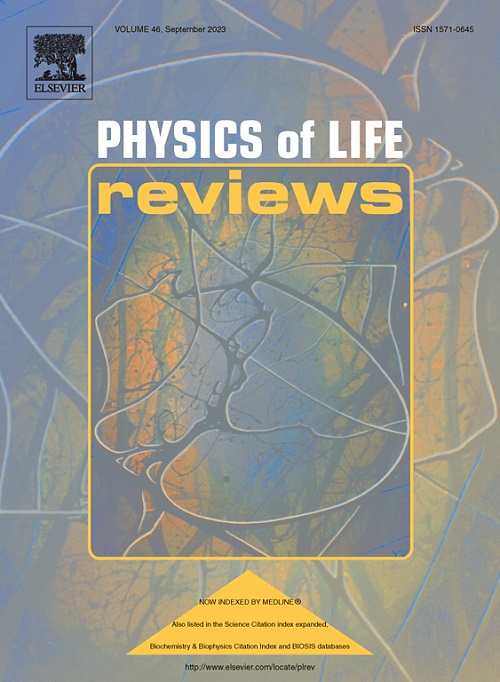Human perception of ionizing radiation
IF 13.7
1区 生物学
Q1 BIOLOGY
引用次数: 0
Abstract
Here we address the question of whether humans can perceive ionizing radiation. We conducted a thorough review of the clinical and experimental literature related to ionizing radiation, with a focus on its acute effects. Specifically, we examined the three domains of X-ray perception found in animals (abdominal, olfactory, and retinal), which led us to instances of ionizing radiation-induced hearing and taste sensory phenomena in humans thus suggesting that humans can perceive X-rays across various sensory modalities via multiple mechanisms. We also analyzed literature to understand the mechanisms associated with reported symptoms, this led us to the concept of radiomodulation, an understudied modulatory effect of sub-ablative ionizing radiation doses on neurons. Based on this review of the literature we propose the hypothesis that a significant radiomodulation mechanism is the formation of reactive oxygen species from radiolysis which activates immune and sensory signal transduction mechanisms specifically related to the redox activity in TRP and K+ channels. Additionally, we find evidence to support the previous claims of perception stemming from Cherenkov radiation and ozone production which are perceived using canonical sensory modalities. Finally, for we provide a concise summary of the applications of ionizing radiation in clinical imaging and therapy, as well as prospects for future developments of radiation technologies for biomedical and fundamental research.
人类对电离辐射的感知
在这里,我们讨论人类是否能感知电离辐射的问题。我们对与电离辐射有关的临床和实验文献进行了全面的回顾,重点是电离辐射的急性效应。具体来说,我们研究了在动物中发现的三个x射线感知领域(腹部、嗅觉和视网膜),这使我们发现了电离辐射诱导人类听觉和味觉感觉现象的实例,从而表明人类可以通过多种机制感知各种感觉模式的x射线。我们还分析了文献,以了解与报告症状相关的机制,这使我们提出了辐射调节的概念,这是一种未被充分研究的亚烧蚀电离辐射剂量对神经元的调节作用。基于对文献的回顾,我们提出了一个重要的辐射调节机制,即放射性溶解形成活性氧,激活与TRP和K+通道氧化还原活性相关的免疫和感觉信号转导机制。此外,我们发现证据支持以前的感知主张源于切伦科夫辐射和臭氧生产,这是使用规范的感官模式感知。最后,对电离辐射在临床成像和治疗中的应用进行了简要总结,并对辐射技术在生物医学和基础研究中的未来发展进行了展望。
本文章由计算机程序翻译,如有差异,请以英文原文为准。
求助全文
约1分钟内获得全文
求助全文
来源期刊

Physics of Life Reviews
生物-生物物理
CiteScore
20.30
自引率
14.50%
发文量
52
审稿时长
8 days
期刊介绍:
Physics of Life Reviews, published quarterly, is an international journal dedicated to review articles on the physics of living systems, complex phenomena in biological systems, and related fields including artificial life, robotics, mathematical bio-semiotics, and artificial intelligent systems. Serving as a unifying force across disciplines, the journal explores living systems comprehensively—from molecules to populations, genetics to mind, and artificial systems modeling these phenomena. Inviting reviews from actively engaged researchers, the journal seeks broad, critical, and accessible contributions that address recent progress and sometimes controversial accounts in the field.
 求助内容:
求助内容: 应助结果提醒方式:
应助结果提醒方式:


